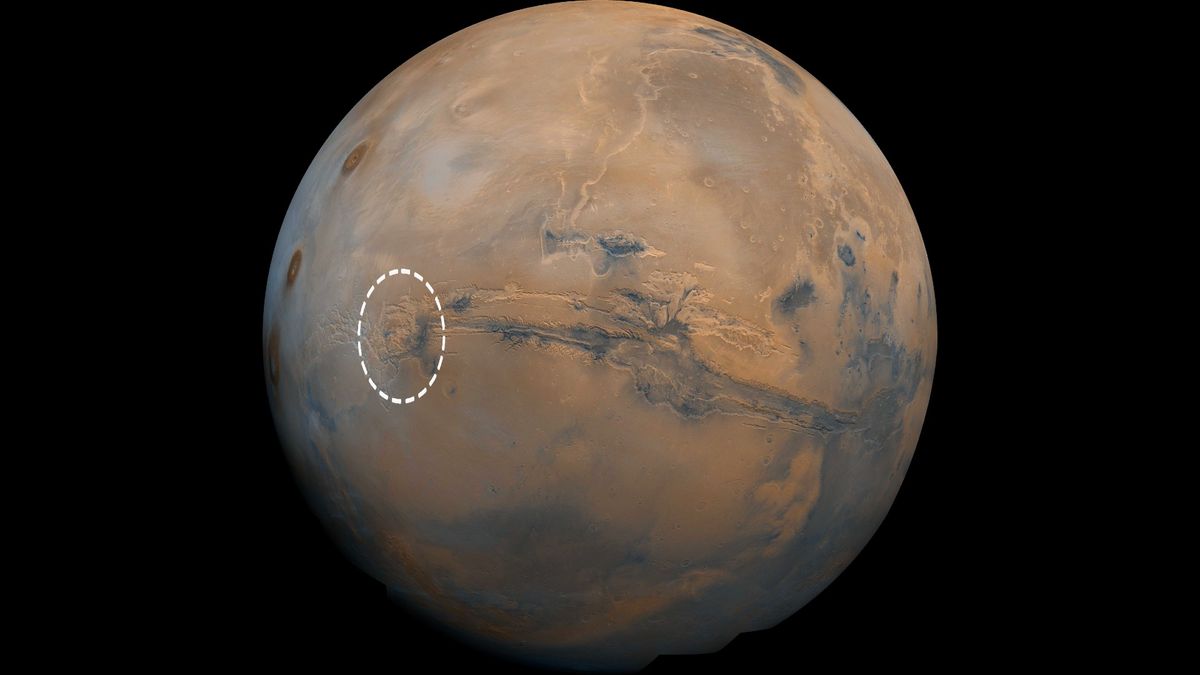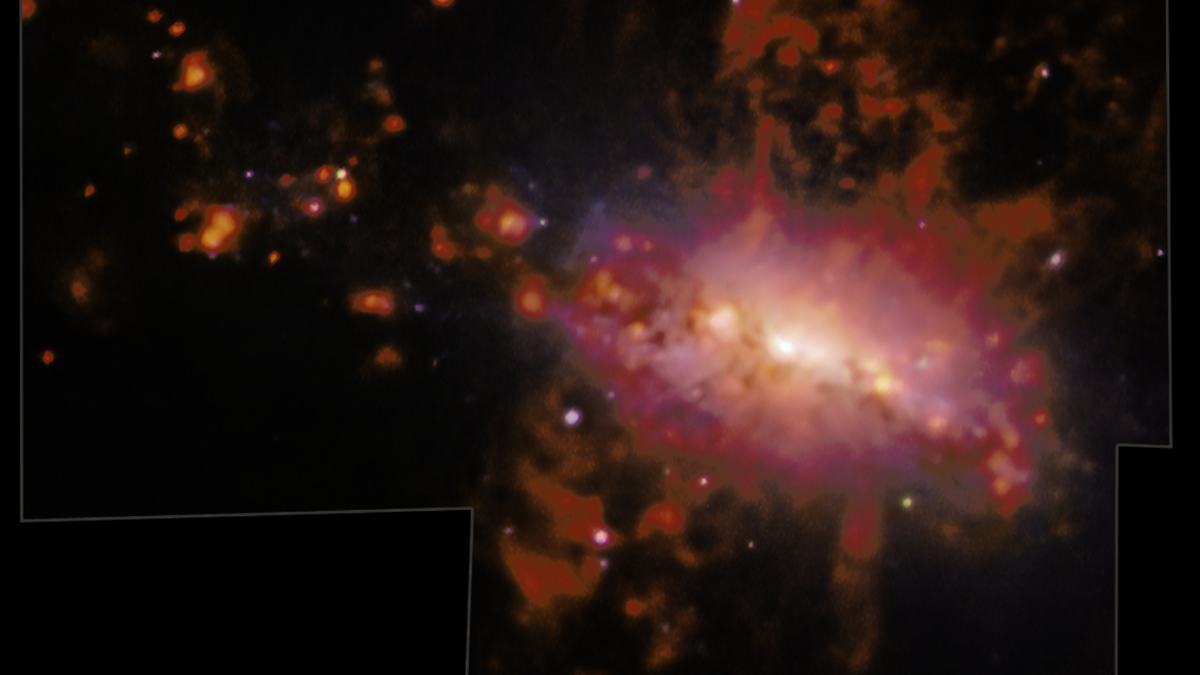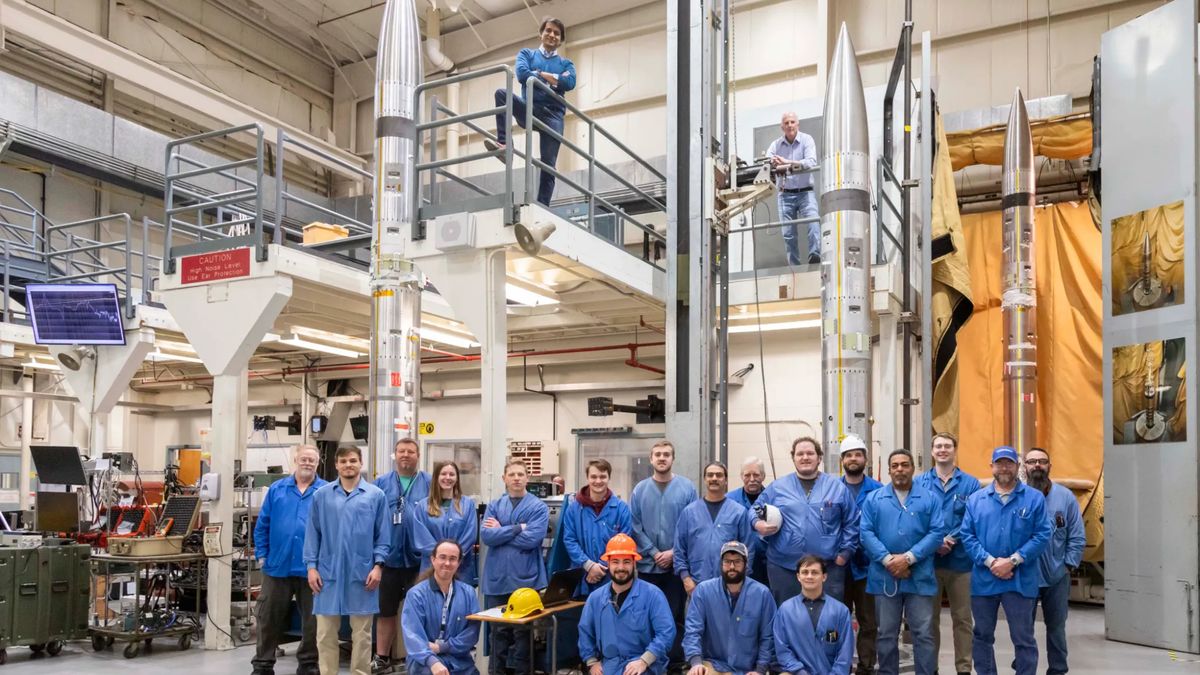The Mysteries of Mars Unveiled: Discovering a Giant Volcano and Potentially Buried Glacier Ice
The Red Planet, Mars, has once again astounded us with its hidden treasures. Recent research has shed light on a colossal volcano and a suspected layer of buried glacier ice. This groundbreaking revelation emerged from the eastern sector of the Tharsis volcanic expanse on Mars, situated near the planet’s equator. Due to its weathered and inconspicuous facade, this geological feature eluded detection since its initial imaging by Mariner 9 in 1971.
The remarkable findings were disclosed during the ongoing 55th Lunar and Planetary Science Conference in The Woodlands, Texas, according to a press release from the SETI Institute. The investigation drew upon data accumulated from various missions, including NASA’s Mariner 9, Viking Orbiter 1 and 2, Mars Global Surveyor, Mars Odyssey, and Mars Reconnaissance Orbiter, alongside the European Space Agency’s Mars Express mission.
Potential Exploration Destination
The newly unearthed volcano was concealed in plain sight within a renowned section of Mars, bordering the intricately fractured Noctis Labyrinthus and the expansive canyon system of Valles Marineris. This territory also hosts the eminent Ascraeus Mons, Pavonis Mons, and Arsia Mons volcanoes. Despite diminished elevation compared to its counterparts, this colossal volcano spans about 280 miles (450 kilometers) in diameter and reaches approximately 29,600 feet (9,022 meters) in height.
Significantly, this discovery heralds a fresh prospect for probing potential life forms and beckons as a viable target for impending robotic and human exploratory missions.
The “Smoking Gun” and Enigmatic Conundrums
Embodying the vanguard of this expedition is Pascal Lee, a distinguished planetary scientist affiliated with the SETI Institute and the Mars Institute at NASA Ames Research Center. The advent of this colossal volcano within the Martian landscape emanated from prior glacier remnants identified last year.
The volcano’s substantial dimensions and intricate evolutionary trajectory hint at protracted volcanic activities and harbor remnants of glacier ice beneath a recent superficial volcanic stratum. This realm of Mars, replete with assorted hydrated minerals across a protracted timeline, had long hinted at a volcanic backdrop. Consequently, this momentous discovery serves as a pivotal evidential revelation.
While the Noctis volcano’s semblance diverges from the archetypal volcanic cone due to extensive fracturing and erosion, incisive scrutiny exposes pivotal volcanic traits. Nestled within the “inner zone” marking the volcano’s zenith are elevated tablelands indicating the central summit, progressing to +9022 m (29,600 ft). Vestiges of the volcano’s inclines cascade in diverse directions towards the “outer zone,” 225 km (140 miles) from the summit. Noteworthy features within the volcano’s perimeters encompass lava flows, pyroclastic sediment, and hydrothermal deposits, alongside remnants of a former caldera hosting a lava reservoir. Additionally, discernible are rootless cones and the conceivable presence of shallow buried glacier ice interspersed within the extensive volcanic structure.
A Pioneering Frontier for Exploration
This groundbreaking discovery ushers forth a multifold of enigmas concerning the volcano’s inception timeline, ongoing volcanic activity, and potential habitability. The geological allure of the Noctis volcano impels in-depth exploration and sampling to unravel Mars’ evolutionary trajectory over epochs.
Following meticulous cartographic scrutiny facilitated by NASA’s Mars Global Surveyor, Mars Reconnaissance Orbiter, in conjunction with the European Space Agency’s Mars Express mission, the epicenter of the Noctis volcano emerged. The distinctive topographic contours demarcating the volcano’s summit, caldera ruins, and inner and outer zones underscore the site’s potential relevance for future exploratory missions.
An Intriguing Nexus of Geology and Astrobiology
The saga of the Noctis volcano encapsulates a realm resonant with geologic mysteries and astrobiological prospects. The interplay of ancient thermal activity and glacial water imbues this site with a coveted status for discerning potential biotic signatures. Establishing this site as a frontier of astrobiological intrigue accentuates its allure for robotic and human exploration, fostering visions of future habitation and resource extraction.
Moreover, the alluring prospect of encountering shallow glacier ice in Mars’ temperate equatorial domain forefronts the tantalizing prospect of human forays into less frigid Martian terrains, harvesting water reservoirs for sustenance and propellant augmentation.
Image/Photo credit: source url





